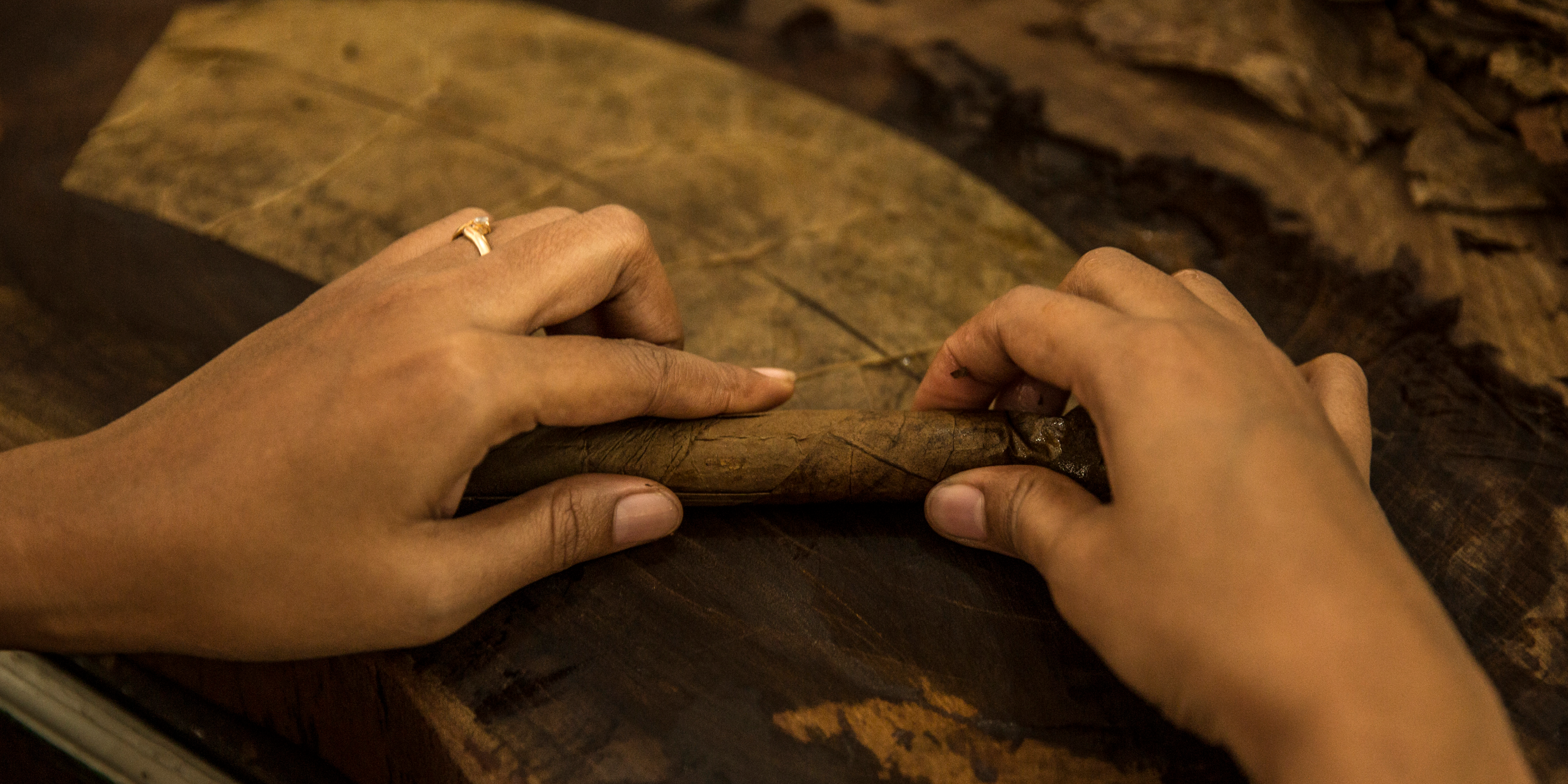
SENDING CLOUDS TO THE SKY
Since Native Americans began enjoying tobacco thousands of years ago, it has been chewed, sniffed and above all smoked.
While nobody knows how smoking started, one early myth tells of a Native American shaman who wanted to create rain. His tribe was suffering during a drought, and he knew that rain was connected with clouds. So, quite reasonably, he thought that sending his own ‘clouds’ skywards might create the downpour his people needed so desperately.
We don’t know if the clouds he produced by puffing on a pipe led to rain, but he certainly found a new source of enjoyment for mankind. And by the time Columbus landed in 1492, smoking was well-established among priests, chiefs and other shamans as a way of creating a special bond between man, gods and nature.
It’s also easy to suspect that these privileged members of society also enjoyed the physical effects caused by smoking tobacco.
SMOKING FOR RELIGION, POLITICS – AND ENJOYMENT
It was about 8,000 years ago that tobacco as we know it today started to be grown in the Americas.
Scientists have found evidence from around this time of changes taking place in plants as a result of cultivation and selective breeding. The assumption is that this sudden growth in interest resulted from the discovery of the pleasures of tobacco smoking.
But it’s not until around year 0 that we find the first hard evidence of smoking, among the indigenous peoples of Peru. Then, from around 470, the Mayan people from the region that today comprises Mexico, Honduras, Belize, Guatemala and El Salvador brought smoking with them as they migrated northwards as far as the Mississippi valley.
It rapidly spread among neighbouring peoples, along with a complex system of religious and political rites. Long before Columbus, it had spread north as far as Hudson Bay among the widespread Algonquian groups of Native Americans, who have left written evidence that they believed that the Great Spirit Manitou was revealed in the rising smoke.
So it’s no surprise that, following contact in 1492, Europe wasn’t slow in adopting this compelling and satisfying new habit.
TOBACCO “DRINKER” IS THROWN IN GAOL
“The natives brought fruit, wooden spears and certain dried leaves which gave off a distinct fragrance.”
These words from the journal of Christopher Columbus were written following his landing on the Bahamas island of San Salvador on 12 October 1492. Although he initially discarded the tobacco, two of his crew were intrigued to see local people “drinking” its smoke (the term “smoking” was yet to be invented) a month later on Cuba.
As a result, crewman Rodrigo de Jerez became the first non-American to take up smoking. But when he got home to Ayamonte in Spain, the Spanish Inquisition threw him in prison under the belief that only the Devil could blow smoke from his mouth and nose.
By the time of his release, however, there was a craze for smoking across Spain – and Europe was next.
NO MORE HEADACHES FOR THE QUEEN OF FRANCE
The spread of tobacco across Europe was rapid, originally driven by its use as a medicine.
Its greatest champion was the 16th Century French queen Catherine de Medici, who was prescribed it by her physician Jean Nicot (hence the word “nicotine”) in the form of snuff as a cure for her frequent and severe migraines.
Sure enough, the sneezing it caused expelled the painful “evil spirits”. But that wasn’t all – Catherine enjoyed sniffing snuff so much that she took it up fulltime, to be followed first by her court and then the upwardly mobile middle classes throughout France, Portugal and Spain.
GROWING INTERNATIONAL TRADE TAKES TOBACCO GLOBAL
The use of tobacco rapidly went global. Spreading fast along trading routes from the ports of Europe, it soon reached Russia, Turkey and China.
Dutch and Portuguese vessels then took it even further, to the great Japanese ports of Nagasaki and Kagoshima. Japanese society embraced tobacco assiduously, creating the beautiful silver pipes called “Kiseru”.
Africa was next, bombarded by the French to the West and the Portuguese from the East – soon, tobacco was popular throughout the entire continent.
So having spread from the Americas to Europe and from there to Asia and Africa, within a few decades tobacco had reached the whole known world.
KINGS, CHURCHES AND GOVERNMENTS GET IN ON THE ACT
Despite its rapid spread across the world, tobacco wasn’t universally popular. England’s King James 1 called it a “barbarous custom”. The Catholic Church wasn’t above real barbarity in its opposition, sanctioning the execution in 1692 of five friars who smoked during a service. In Turkey, Sultan Murad (1623 – 40) beheaded anybody caught smoking in public.
Elsewhere, rulers tried to control it in other ways. In 1635, Louis XIII of France determined it was medicine that only doctors could prescribe – a restriction that was overturned the following year due to the profit opportunities its growing popularity represented.
Governments too got in on the act, widely imposing import taxes to grasp its profit potential. In another strategy, Spanish officials tried in 1606 to gain more control over the fledgling industry by banning cultivation in Cuba, Margarita, Puerto Rico and elsewhere, but their efforts were unsuccessful. They did, however, succeed in establishing a monopoly in 1632 that diverted significant funds to the royal coffers.
British officials had another reason for attempting to control production in Virginia – settlers were growing so much tobacco in 1629 that they were neglecting food crops.
So tobacco has been taxed and regulated for centuries – maybe not much has changed…
CREATIVE WAYS TO ENJOY TOBACCO
When Columbus and his crew first came across tobacco, they first saw it being consumed through the mouth using a form of cigar.
But soon many other means of consumption were observed. Europeans also saw Native Americans using pipes to inhale through the nose as well as the mouth. Others witnessed tobacco being ground into a paste, which was then chewed to postpone hunger and thirst – very useful when on a hunting expedition. And snuff was universally popular.
But Europeans did not embrace all these creative ways of consuming tobacco. Snuff and pipes were immediately popular, but cigars did not catch on until the early 19th Century. And it wasn’t until the 1880s that cigarettes – hitherto very expensive to make – became popular when production costs fell drastically.
The breakthrough of cigarettes saw smoking increase its appeal to women, and by the mid-20th Century over half of all adults in Europe smoked.
Smoking had become part of everyday life.



